Dallas-Fort Worth Economic Indicators

Dallas–Fort Worth economic growth strengthened in June. Payroll employment in the second quarter expanded at its fastest rate in over two years. Unemployment remains low, and the Dallas and Fort Worth business-cycle indexes expanded further. Office leasing activity and industrial demand remained solid in the second quarter.
Labor Market
Job Growth Accelerates
DFW employment rose an annualized 3.7 percent in the second quarter—the fastest pace since third quarter 2016, when employment expanded 4.5 percent (Chart 1). Dallas payroll expansion was robust at 4.3 percent. Employment in Fort Worth also rebounded, rising 2.4 percent after a decline in the previous quarter. In the first half of the year, Dallas added jobs at an annualized 4.4 percent pace (57,440 jobs)—the fastest rate among the major metros—while employment in Fort Worth edged up 1.0 percent (5,076 jobs).
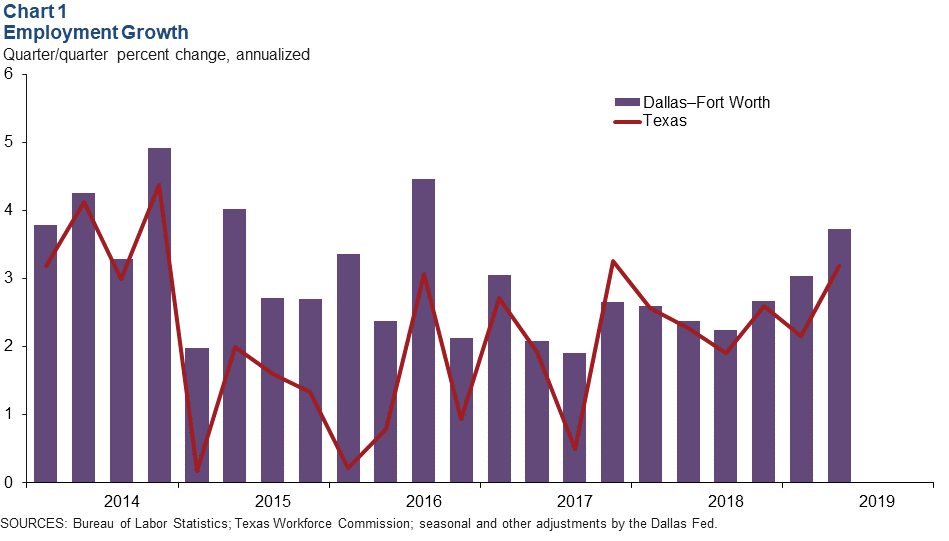
Employment Gains Solid and Broad Based
Employment growth was mostly broad based in the quarter, with payrolls in the goods-producing sector growing an annualized 7.6 percent. Expansion among goods-producing industries was led by a surge in construction and mining employment (Chart 2). Among the service-providing industries, job gains strengthened in the other services, education and health services, and financial activities sectors. Employment growth was solid in professional and business services, while job growth in trade, transportation and utilities—the metro’s largest sector—remained moderate. Only employment in leisure and hospitality and information services contracted in the second quarter.
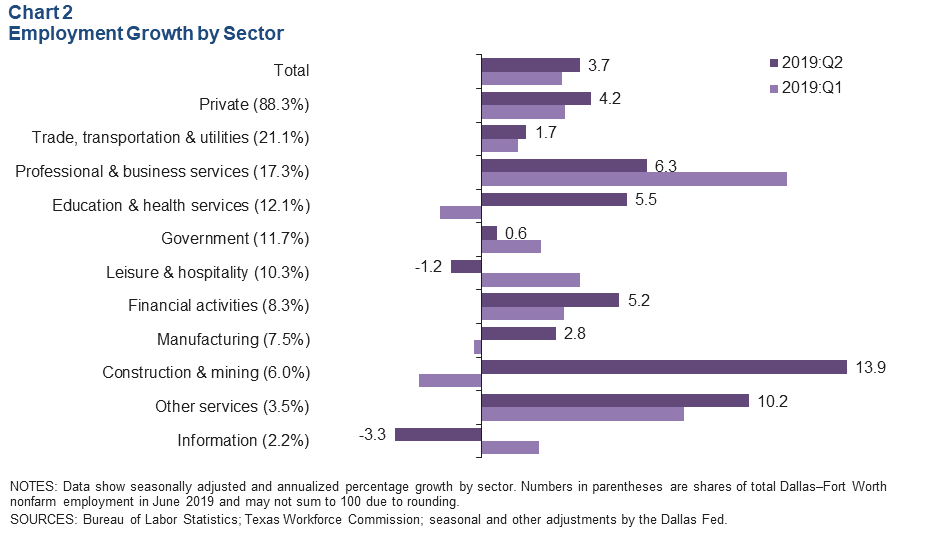
Low Unemployment Continues
The DFW labor market remained tight in June, with unemployment close to multiyear lows. The unemployment rate ticked up to 3.1 percent in Dallas and 3.2 percent in Fort Worth (Chart 3). Unemployment in both metros remains below the state and U.S. rates. Unemployment hit a new record low of 3.4 percent in Texas but edged up to 3.7 percent in the U.S.
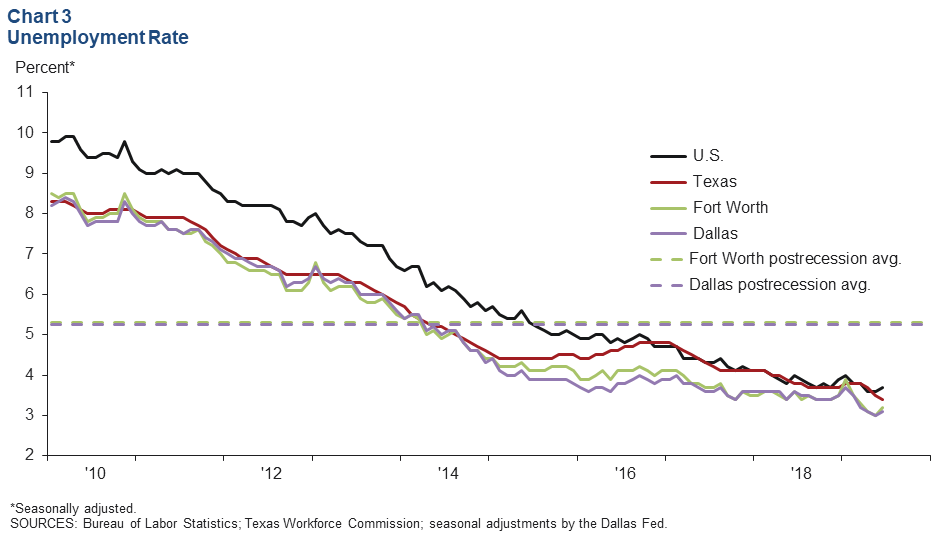
Business-Cycle Indexes
Expansion in the Dallas and Fort Worth business-cycle indexes continued in June, supported by strong job growth and low unemployment (Chart 4). The Dallas index rose an annualized 8.2 percent, quicker than May’s 4.6 percent rate. Growth in the Fort Worth index strengthened to 8.0 percent from 2.7 percent in May. Year over year, the Dallas index rose 5.4 percent, and the Fort Worth index was up 2.6 percent in June.
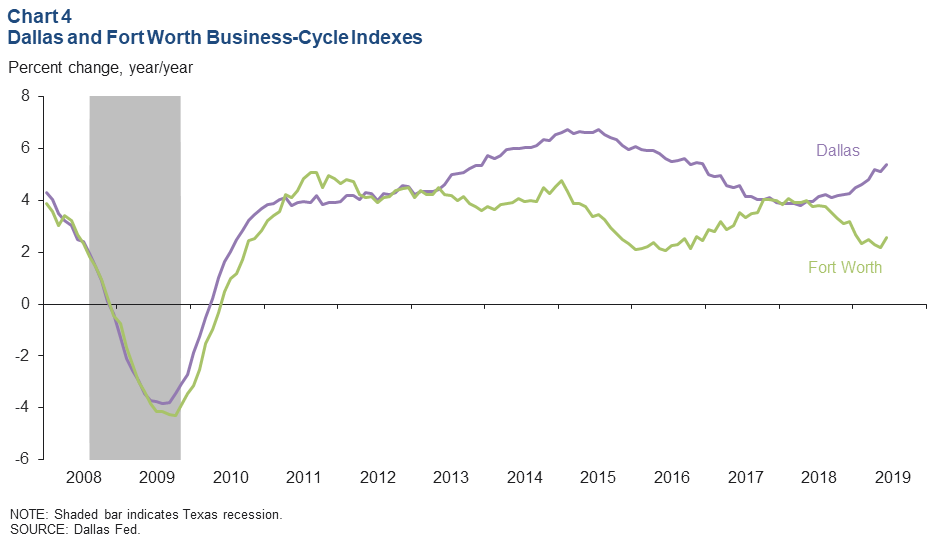
Commercial Real Estate
Office Demand Steady
Demand for office space in the DFW market was steady in the second quarter. Net absorption was 744,000 square feet, similar to the first quarter, and the vacancy rate ticked down to 20.6 percent, according to data from CBRE (Chart 5). Average asking rents rose 1.0 percent in the quarter. The construction pipeline grew to 4.4 million square feet from 4.1 million in the first quarter.
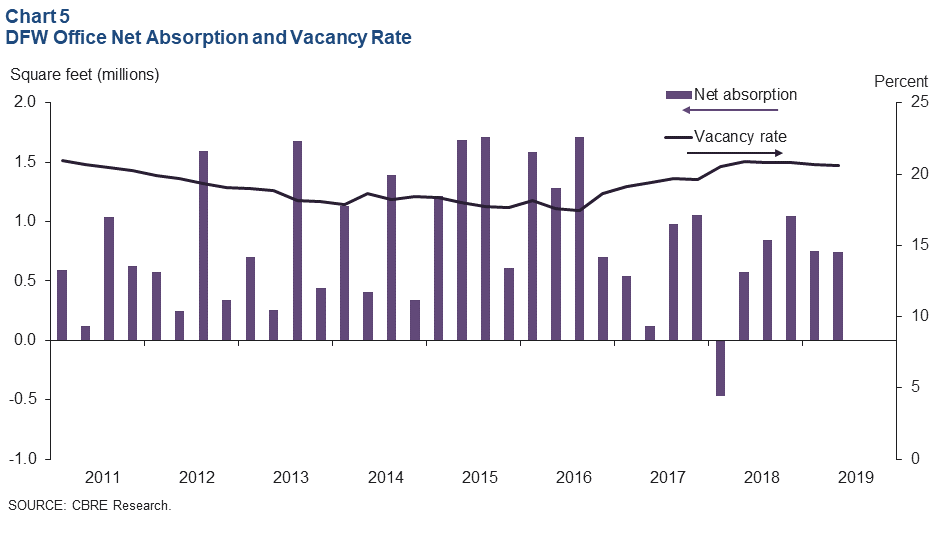
Industrial Leasing Remains Strong
Leasing activity continued to be solid for industrial space in the second quarter, with positive absorption and a tight vacancy rate, according to CBRE (Chart 6). Net absorption was nearly 5.2 million square feet, pushing the total for the first half of the year up to 8.7 million square feet. The vacancy rate ticked down to 6.0 percent, remaining well below its historical average. Construction remained elevated, with the construction pipeline growing slightly to 23.5 million square feet.
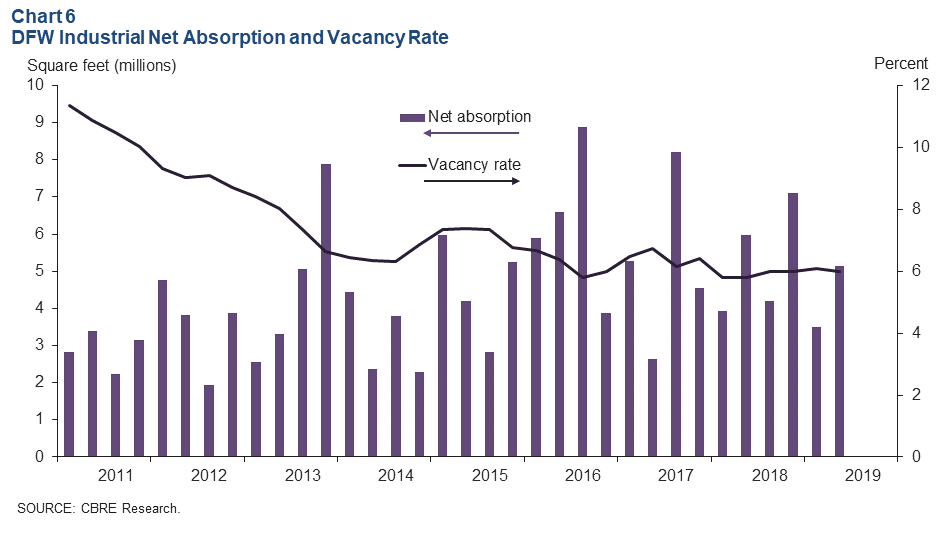
NOTE: Data may not match previously published numbers due to revisions.
About Dallas–Fort Worth Economic Indicators
Questions can be addressed to Laila Assanie at laila.assanie@dal.frb.org. Dallas–Fort Worth Economic Indicators is published every month on the Tuesday after state and metro employment data are released.